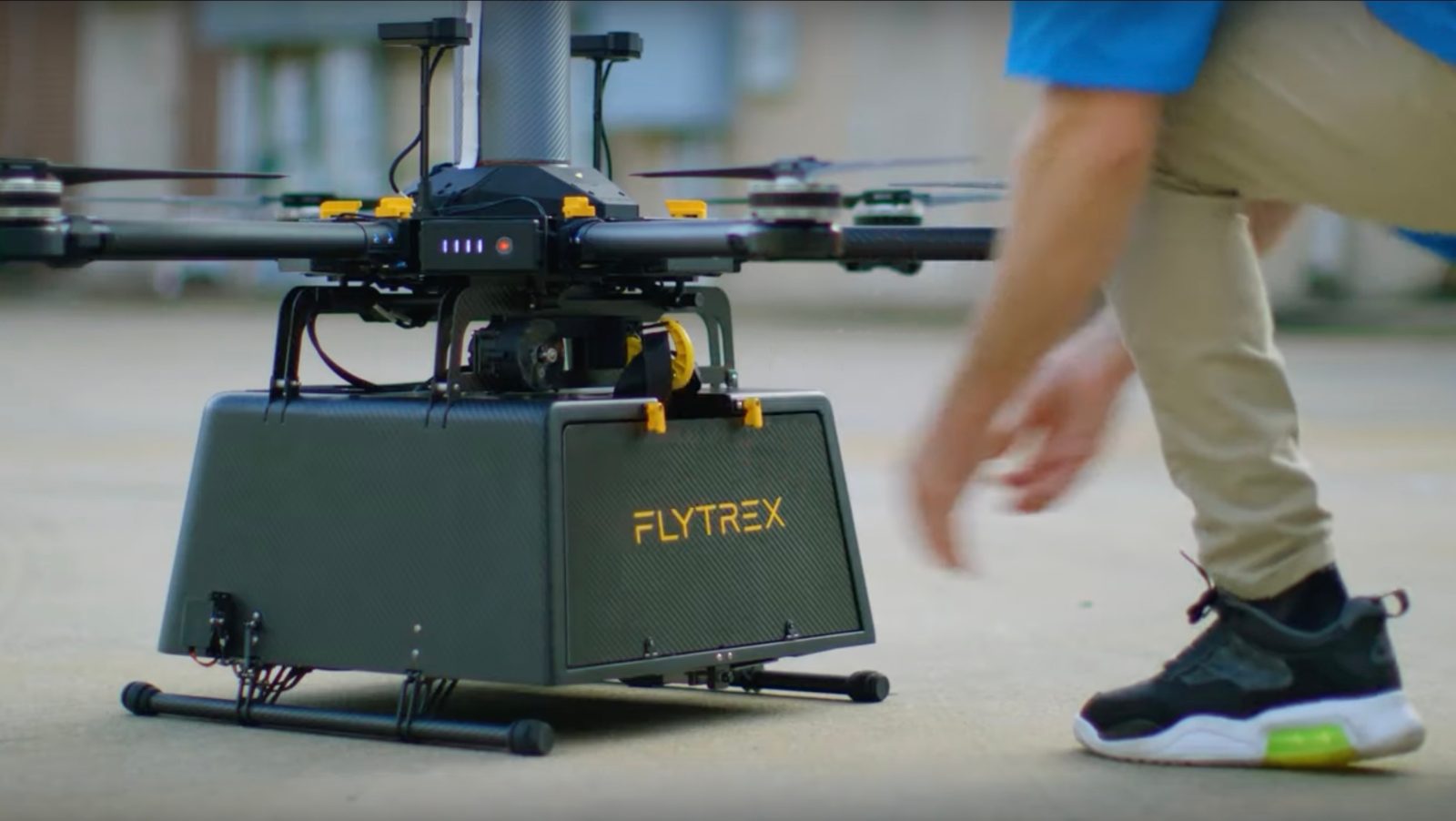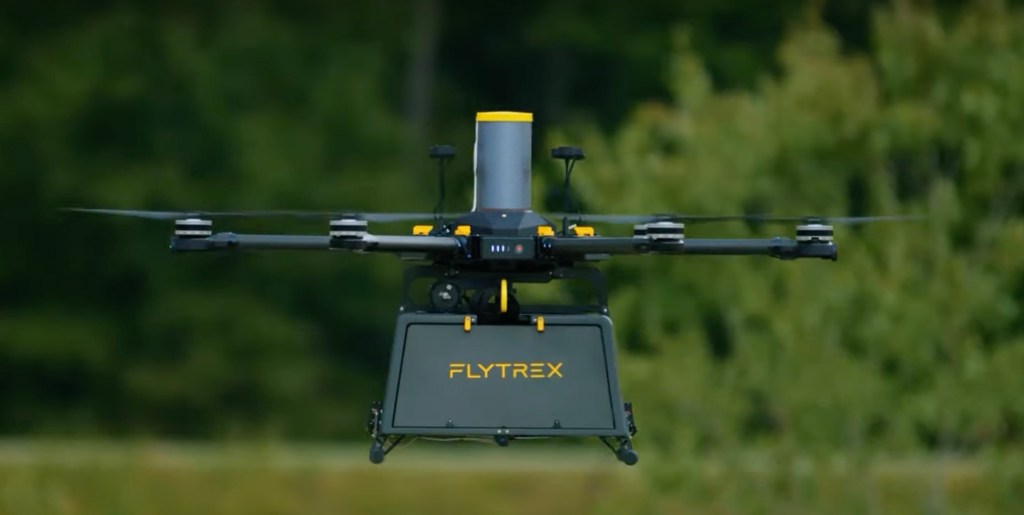
Flytrex co-founder and CEO Yariv Bash may not be out to change the entire world, but he is intent on revolutionizing the way goods are delivered on the planet with a tightly focused, carefully defined plan of making drones the primary force of that progress.
In recent months, Flytrex has continued to expand its UAV operations that now cover 10,000 potential households in three North Carolina communities – part of its larger ambition to cut the distance between retailers and customers across the US, and world beyond. Ever attentive to his mission, however, Bash would doubtless take semantic issue with the wording of that previous sentence, stressing instead that his business plan – and vision of small delivery activity – is very specifically built on backyards, suburbs, and on-demand service by automated drones.
That precision of language and strategy are important. So, too, is the technology and operational technique, Bash insists, which must be tailored to the environment, distances traveled, time expectations, and goods being delivered by drone.
“There are companies that are ripping it up in Africa, doing great work saving lives every day in a way that works well for medical supplies dropped by parachute at destinations far away, but it wouldn’t work getting a burrito across town to someone’s backyard in five minutes,” Bash said in a recent online interview with DroneDJ. “Whether it’s Starbucks coffee and a burger, or IV drips and medicines, the drones and delivery methods have to match your market – and ours do.”

Bash acknowledges that both regulation and certification are, rightly, a meticulous process. What otherwise might have been an explosion of drone delivery activity by now has been tempered by legitimate safety concerns. Most companies active in UAV transport services are operating on Federal Aviation Administration (FAA) certification obtained painstakingly, as full rules and infrastructure are still being worked out. An aerial Far West it is not, and with good reason.
Flytrex, however, has made certain it’s been part of the forward movement that has occurred.
It initially obtained the FAA’s approval to operate on-demand drone deliveries to backyards in Fayetteville, NC, before being permitted to extended its footprint to neighboring Raeford and Holly Springs – a flight range of one nautical mile. As part of that authorization, Flytrex craft – operated by local partner Causey Aviation Unmanned – can fly above people and moving cars.
It has been working closely with the FAA in its BEYOND initiative to help tackle the remaining challenges of safe and efficient drone integration, including beyond visual line of sight (BVLOS) operations. Though the company won’t be releasing full details on that expanding 2021 activity, Bash says Flytrex drones are making “dozens” of on-demand deliveries inside the promised five-minute deadline.
That achievement has been a long time coming for a company that first began operating in 2017 in Reykjavik, Iceland and has been working closely with North Carolina officials and the FAA to launch US service since 2018. But that effort has produced what Bash believes is the winning on-demand drone delivery paradigm of the future. Meanwhile, he expects 2022 to be the bust-out year for wider activity, and says Flytrex will be in the thick of that.
“I think we’ll see some certifications, more BVLOS operation under BEYOND, and things being set up for the big zero-to-one moment,” Bash says. “From there operators will be able to develop as they wish, and launch where they want without the FAA holding their hand and asking about what’s going on.”
When that happens, Bash is convinced Flytrex will have distinct advantages over its competitors.
For starters, he says, the company manufactures all its drones and navigational gear. That, Bash notes, ensures equipment is optimized for operation in what he considers the drone delivery heartland: inexpensive, on-demand runs with quick turn-around, in low skyline suburban areas where backyard drop sites are easily accessed.
“When you order from DoorDash it isn’t delivered in a FedEx van, and probably not a shiny new BMW or Tesla either, which is why we believe it’s vital to have our own full stack of equipment that’s tested, proven and reliable,” he says, noting the company’s automated flight tech also makes operation not just simple, but nearly effortless. “There’s no joystick, virtual goggles, simulated cockpit – just a drone carrying orders loaded by an operator who pushes a button on an iPad, and sends it all automatically into motion.”

With simplicity comes speed, Bash insists, as well as efficiency. He figures a single driver working a large suburban area may serve a couple households per outing, while his drones can make between five and 10 deliveries in roughly the same time.
“The delivery fees restaurants and other retailers are paying for orders are also killing them, but drones will bring those way down,” Bash says. “And once these services are well established, it will become faster and probably less expensive to order something you need and have it brought to your backyard by drone than jumping in the car and driving across town to buy.”
The other UAV front Flytrex continues working on is obtaining full airworthiness certification of its craft. That extra-mile effort, Bash says, will give the company far more operational range and flexibility than it would have using commercial drones as it expands activity to markets across the US.
He also expects that geographical scaling opportunity to arrive faster than most people expect under the advancing FAA regulation writing process – one he feels is often undeservedly criticized as sluggish and flailing.
“The FAA knows drones are the future, and that future is here already, but it’s taking the time it needs to establish comprehensive regulation with streamlined certification procedures,” he says. “We’ve seen what other regulators around the world are doing, and we believe the FAA chose the best approach. In fact, I suspect when we see the FAA produce its regulations, a lot of other aviation authorities around the world will largely copy those. I just hope that when they do, they remember to convert feet to meters.”
FTC: We use income earning auto affiliate links. More.



Comments